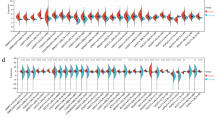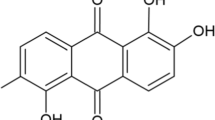Abstract
Background
Hepatocellular carcinoma (HCC) is one of the world’s top five causes of cancer-related deaths. Current treatments available ameliorate HCC; however, current therapy fails to completely treat and prevent HCC, as shown by its high recurrence rate. Recently developed genome-wide gene-expression profile analyses can now robustly detect many candidate genes that are modified by HCC. Here we attempt to identify novel genes displaying altered gene expression profiles when comparing healthy tissue with HCC by means of a double-combination array previously developed.
Methods
Double-combination array analysis of gene expression profiles and single nucleotide polymorphism arrays were performed on each HCC tissue sample. Subsequently, samples from 48 HCC patients were subjected to quantitative real-time reverse transcription polymerase chain reaction and methylation-specific polymerase chain reaction.
Results
The reelin (RELN) gene was detected as a pertinent tumor suppressor gene by means of this method. Of the 48 clinical samples obtained, 34 (79.2%) displayed reduced RELN expression in tumor tissue, and the expression level of tumor tissues clearly reduced compared with that of corresponding normal tissues (P = 0.002). Eighteen (37.5%) of 48 tumor tissues were found to be hypermethylated on the RELN gene promoter. Moreover, analysis of clinical data revealed an inverse correlation between RELN expression and HCC recurrence.
Conclusions
The present study indicates that our in-house double-combination array is an effective and convenient technique in detecting novel genes with altered expression in disease. We suggest RELN is a key regulatory gene associated with the recurrence of HCC.





Similar content being viewed by others
References
Parkin DM, Bray F, Ferlay J, Pisani P. Global cancer statistics, 2002. CA Cancer J Clin. 2005;55:74–108.
Arii S, Okamoto E, Imamura M. Registries in Japan: current status of hepatocellular carcinoma in Japan. Liver Cancer Study Group of Japan. Semin Surg Oncol. 1996;12:204–11.
Thorgeirsson SS, Grisham JW. Molecular pathogenesis of human hepatocellular carcinoma. Nat Genet. 2002;31:339–46.
Hsu IC, Metcalf RA, Sun T, et al. Mutational hotspot in the p53 gene in human hepatocellular carcinomas. Nature. 1991;350:427–8.
Zhang X, Xu HJ, Murakami Y, et al. Deletions of chromosome 13q, mutations in retinoblastoma 1, and retinoblastoma protein state in human hepatocellular carcinoma. Cancer Res. 1994;54:4177–82.
Yamada T, de Souza AT, Finkelstein S, Jirtle RL. Loss of the gene encoding mannose 6-phosphate/insulin-like growth factor II receptor is an early event in liver carcinogenesis. Proc Natl Acad Sci USA. 1997;94:10351–5.
Zhang XK, Huang DP, Qiu DK, Chiu JF. The expression of c-myc and c-N-ras in human cirrhotic livers, hepatocellular carcinomas and liver tissue surrounding the tumors. Oncogene. 1990;5:909–14.
Nishida N, Fukuda Y, Komeda T, et al. Amplification and overexpression of the cyclin D1 gene in aggressive human hepatocellular carcinoma. Cancer Res. 1994;54:3107–10.
Hsu HC, Jeng YM, Mao TL, et al. Beta-catenin mutations are associated with a subset of low-stage hepatocellular carcinoma negative for hepatitis B virus and with favorable prognosis. Am J Pathol. 2000;157:763–70.
Boix L, Rosa JL, Ventura F, et al. c-met mRNA overexpression in human hepatocellular carcinoma. Hepatology. 1994;19:88–91.
Schena M, Shalon D, Davis RW, Brown PO. Quantitative monitoring of gene expression patterns with a complementary DNA microarray. Science. 1995;270:467–70.
Lu YJ, Yang J, Noel E, et al. Association between large-scale genomic homozygosity without chromosomal loss and nonseminomatous germ cell tumor development. Cancer Res. 2005;65:9137–41.
Raghavan M, Lillington DM, Skoulakis S, et al. Genome-wide single nucleotide polymorphism analysis reveals frequent partial uniparental disomy due to somatic recombination in acute myeloid leukemias. Cancer Res. 2005;65:375–8.
Kanda M, Nomoto S, Okamura Y, et al. Detection of metallothionein 1G as a methylated tumor suppressor gene in human hepatocellular carcinoma using a novel method of double combination array analysis. Int J Oncol. 2009;35:477–83.
Okamura Y, Nomoto S, Kanda M, et al. Leukemia inhibitory factor receptor (LIFR) is detected as a novel suppressor gene of hepatocellular carcinoma using double-combination array. Cancer Lett. 2010;28:170–7.
Nomoto S, Kanda M, Okamura Y, et al. Epidermal growth factor–containing fibulin-like extracellular matrix protein 1, EFEMP1, a novel tumor-suppressor gene detected in hepatocellular carcinoma using double combination array analysis. Ann Surg Oncol. 2010;17:923–32.
Rice DS, Curran T. Role of the reelin signaling pathway in central nervous system development. Annu Rev Neurosci. 2001;24:1005–39.
Tissir T, Goffnet AM. Reelin and brain development. Nat Rev Neurosci. 2003;4:496–505.
Sato N, Fukushima N, Chang R, Matsubayashi H, Goggins M. Microarrays and other new technologies. Gastroenterology. 2006;130:548–65.
Abdolmaleky HM, Cheng KH, Russo A, et al. Hypermethylation of the reelin (RELN) promoter in the brain of schizophrenic patients: a preliminary report. Am J Med Genet B Neuropsychiatr Genet. 2005;134:60–6.
Grayson DR, Jia X, Chen Y, et al. Reelin promoter hypermethylation in schizophrenia. Proc Natl Acad Sci USA. 2005;102:9341–6.
Robertson KD. DNA methylation and chromatin—unraveling the tangled web. Oncogene. 2002;21:5361–79.
Johnstone RW. Histone-deacetylase inhibitors: novel drugs for the treatment of cancer. Nat Rev Drug Discov. 2002;1:287–99.
Blaheta RA, Michaelis M, Driever PH, Cinatl J Jr. Evolving anticancer drug valproic acid: insights into the mechanism and clinical studies. Med Res Rev. 2005;25:383–97.
Kuendgen A, Strupp C, Aivado M, et al. Treatment of myelodysplastic syndromes with valproic acid alone or in combination with all-trans retinoic acid. Blood. 2004;104:1266–9.
Conflict of interest
The authors declare no conflict of interest.
Author information
Authors and Affiliations
Corresponding author
Rights and permissions
About this article
Cite this article
Okamura, Y., Nomoto, S., Kanda, M. et al. Reduced Expression of Reelin (RELN) Gene Is Associated With High Recurrence Rate of Hepatocellular Carcinoma. Ann Surg Oncol 18, 572–579 (2011). https://doi.org/10.1245/s10434-010-1273-z
Received:
Published:
Issue Date:
DOI: https://doi.org/10.1245/s10434-010-1273-z




